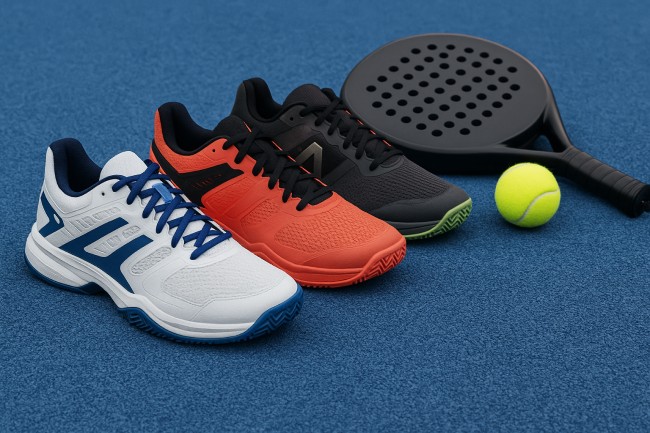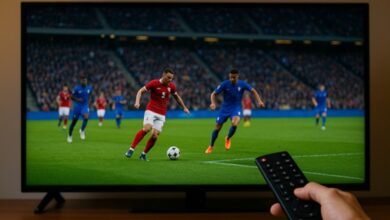The Ultimate Guide to Choosing the Best Padel Shoes in 2025

As padel continues to surge in global popularity, players are investing more time and money into equipment that elevates their game. One of the most overlooked but essential aspects of padel gear is footwear. While rackets and balls might steal the spotlight, padel shoes are the proper foundation of comfort, agility, and injury prevention on the court.
In this guide, we’ll break down what makes a great pair of padel shoes, how they differ from traditional tennis or running shoes, and what to consider before making your next purchase. We’ll also touch on why the right pair of shoes could be the difference between a win and a sprained ankle.
Why Padel Requires Specialized Footwear
Padel is not quite tennis, and it’s not squash or pickleball. It’s a hybrid sport with unique court surfaces and movement demands. Unlike traditional tennis courts, padel courts are enclosed, and the artificial turf or sand-filled grass used in most professional courts requires a specific grip type for optimal movement. The playing style requires quick sprints, side-to-side movements, abrupt stops, and regular jumping. Running shoes or general-purpose sneakers don’t provide the needed stability or durability.
That’s where padel shoes come in—they’re engineered to support the biomechanics of padel play, offering specialized outsoles for grip, reinforced uppers for lateral movement, and sole cushioning to reduce impact on joints.
Key Features to Look for in Padel Shoes
When shopping for padel shoes, you’ll want to go beyond just aesthetics. Here are the critical components that separate top-tier footwear from your average gym sneakers:
1. Outsole Pattern and Grip
The outsole of the shoe is the most vital component for every padel player. Unlike hardcourt tennis shoes, which often have herringbone or flat soles, padel shoes usually feature a zigzag or mixed-pattern sole that’s ideal for synthetic turf. These soles allow players to glide when needed but stop abruptly without slipping.
Be wary of using tennis shoes on sand-filled courts—they can result in loss of traction and increase injury risk.
2. Lateral Support and Stability
Because the majority of padel movement is side-to-side, lateral reinforcement is crucial. Quality padel shoes include stiffened sides, extended midsoles, and even heel cages to prevent ankle rolling or overpronation.
3. Cushioning and Comfort
Cushioning may seem like a luxury, but it’s a necessity, especially in competitive play. The repeated jumps and landings in padel take a toll on the knees and lower back. Shoes with gel padding, memory foam, or proprietary shock-absorbing materials reduce joint strain and muscle fatigue.
4. Breathability and Weight
Lightweight materials such as mesh help players stay agile, especially during hot-weather matches. While breathability doesn’t directly affect performance, overheated feet can lead to blisters or discomfort, affecting your concentration and endurance.
Popular Brands in the Padel Shoe Market
Leading sportswear brands have recognized padel’s growing market and started developing footwear specifically for the sport. Brands like Babolat, Asics, Head, Nike, and Adidas now offer dedicated lines tailored to padel players’ needs. Each has its fit, price point, and tech innovations.
- Asics Gel-Padel: Known for comfort and shock absorption.
- Babolat Jet Premura: Designed for speed and explosive movement.
- Adidas CourtJam Control: Balances grip and durability.
On the other hand, brands like Nike and Puma tend to focus more on crossover tennis shoes. While they might work for casual play, they’re often not optimized for sand-based surfaces.
Common Mistakes to Avoid When Buying Padel Shoes
- Choosing by Style Alone. A flashy design won’t help if your shoes don’t grip the court or support your ankles.
- Using Running Shoes or Indoor Trainers. These are made for linear motion or smooth surfaces, not for quick lateral sprints on gritty turf.
- Ignoring Fit and Break-in Period. Ill-fitting shoes lead to blisters, black toenails, or worse. Always try them on with your game socks and give them a few training sessions to break in.
- Underestimating Sole Wear. The outsole is typically the first component to show signs of wear. Replace your shoes every 6-9 months if you play regularly.
When to Replace Your Padel Shoes
A common indication that your shoes require replacement is when the traction begins to wear out or the midsole feels less supportive. If you’re slipping more, feeling sore after matches, or notice fraying fabric, it’s time for a new pair. Experienced players training 3–5 times weekly might alternate between two pairs of shoes to prolong durability and give the material time to recover between sessions.
How Padel Shoes Are Different from Tennis Shoes
Though the two may look similar at a glance, padel shoes are made for multi-directional play on synthetic turf. Tennis shoes, especially for hardcourt use, are designed for asphalt-style surfaces and may lack the flexibility or grip patterns suited for padel.
Moreover, padel shoes often have a slightly lower heel drop to maintain better ground contact, which is critical for the explosive bursts common in padel.
Conclusion: The Right Shoes Can Change Your Game
Whether you’re a casual weekend player or a seasoned athlete participating in international tournaments, choosing the proper footwear isn’t optional—it’s essential. With injury prevention, agility, and comfort on the line, investing in quality padel shoes is one of the most intelligent decisions you can make for your performance and health.
So, before you hit the court again, take a moment to check your gear, especially what’s on your feet. Your knees, ankles, and winning streak will thank you.
UK-based readers or beginners).


